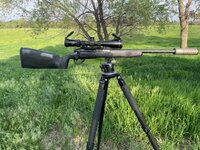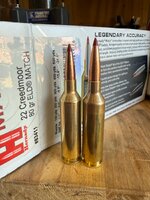B_Reynolds_AK
WKR
So nitriding a barrel means the rifling as well, not just the exterior of the barrel like a Cerakote?If a gun company is offering properly nitrided guns from the OEM then it’s a great option, especially for very harsh coastal environments or heavy use users.
Having Joe Blow Tacticool Coatings nitride your barreled action is where the issues can arise.


